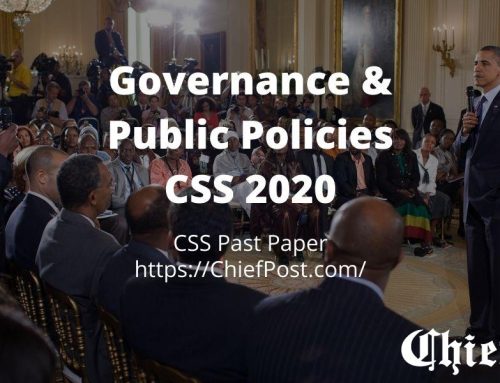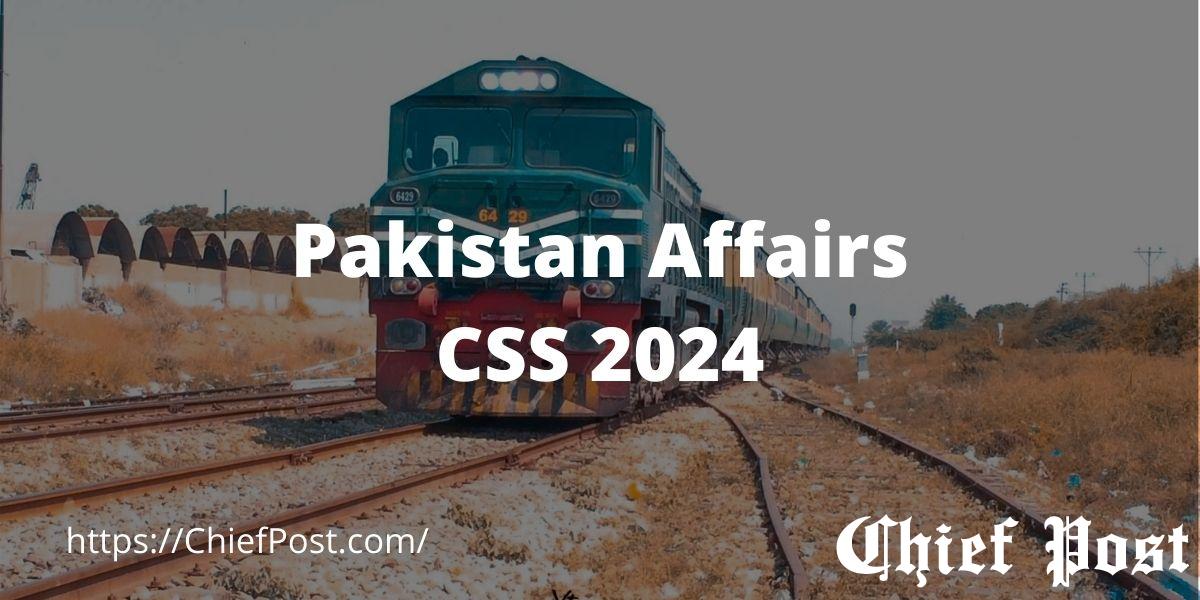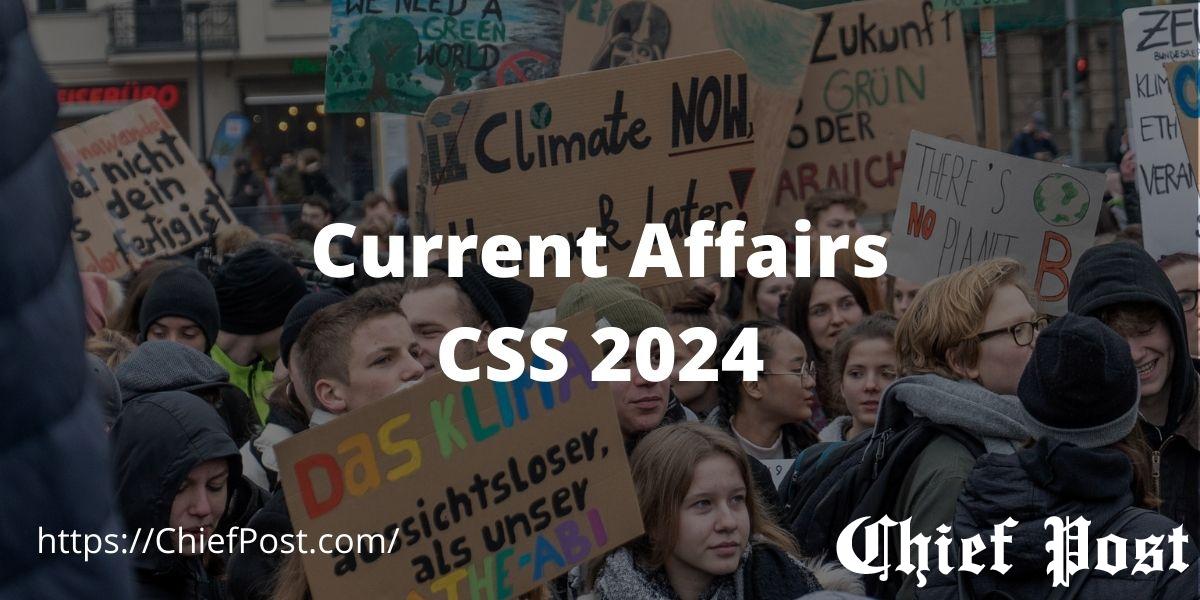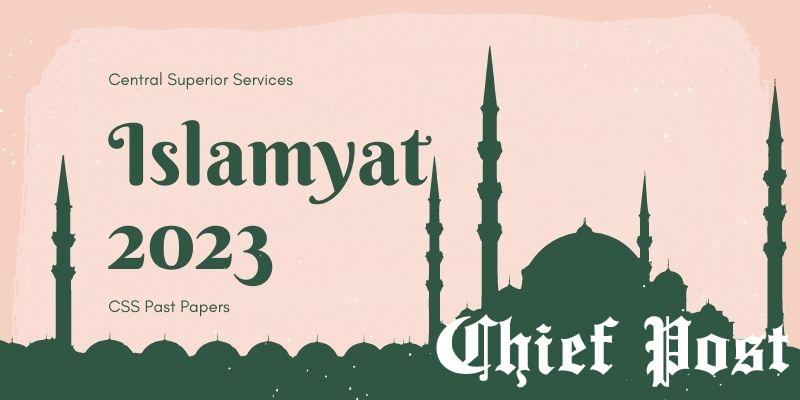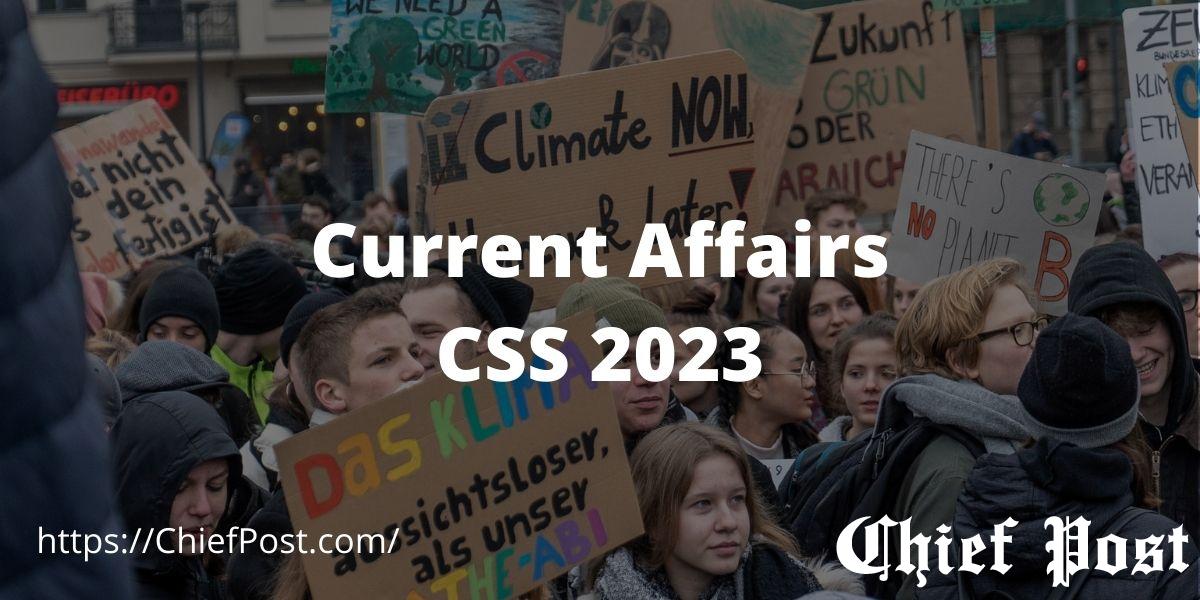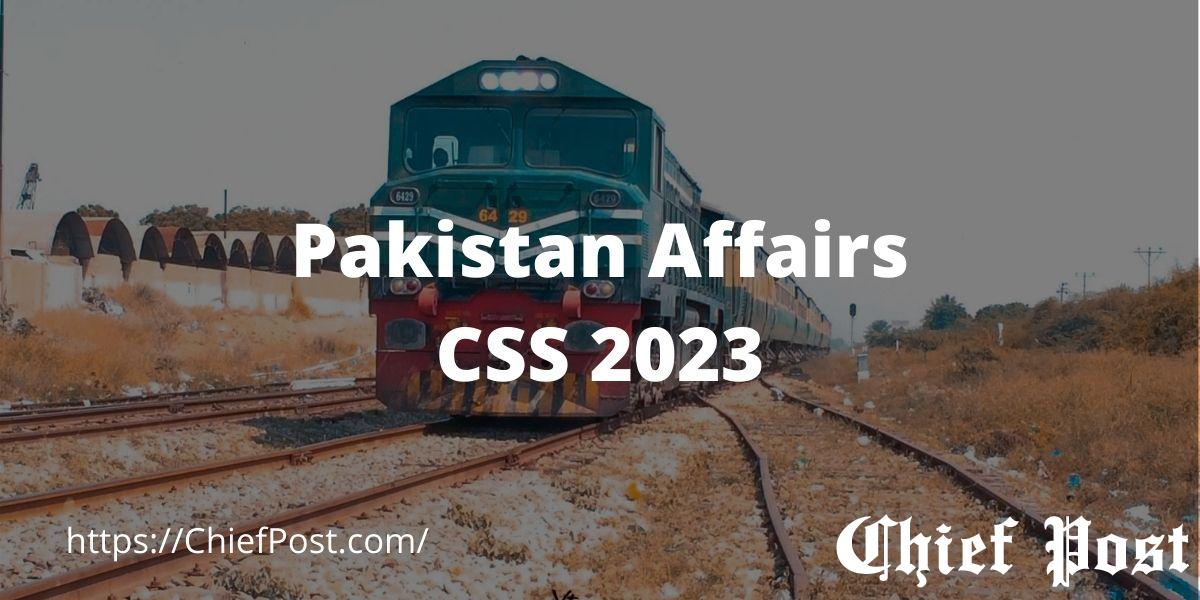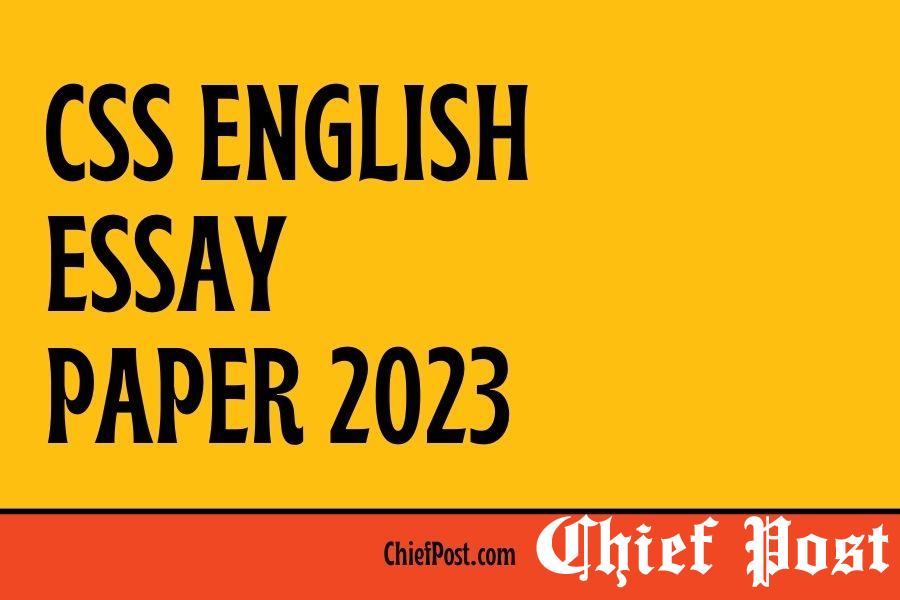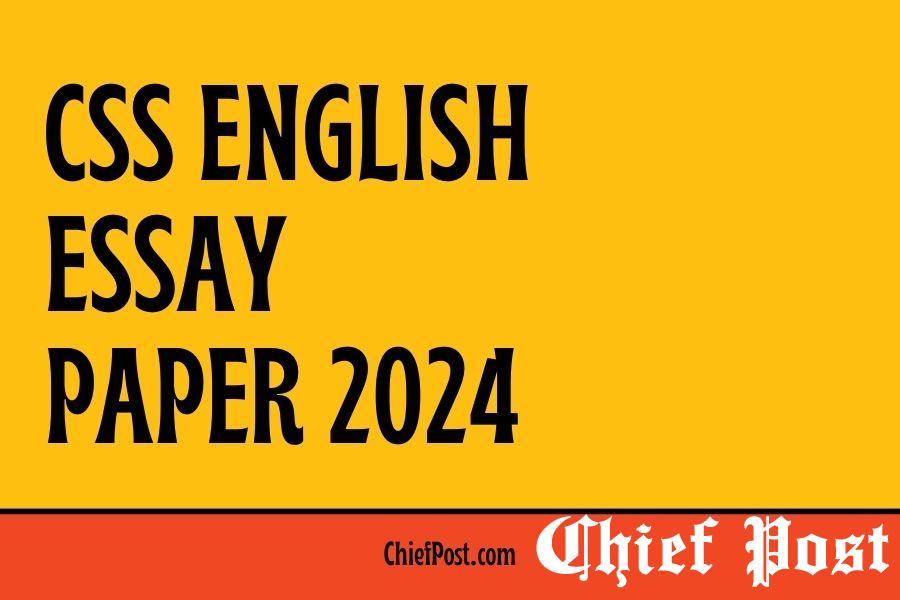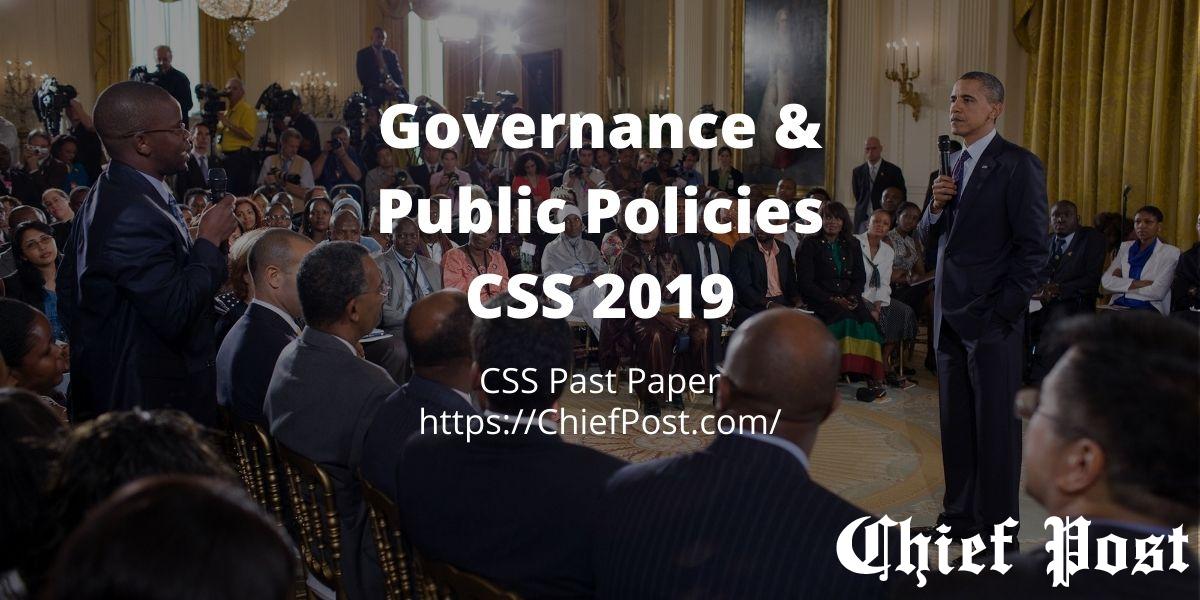
Governance and Public Policies 2019 — CSS Past Paper
FEDERAL PUBLIC SERVICE COMMISSION
COMPETITIVE EXAMINATION-2019
FOR RECRUITMENT TO POSTS IN BS-17
UNDER THE FEDERAL GOVERNMENT
GOVERNANCE AND PUBLIC POLICIES
TIME ALLOWED: THREE HOURS
PART-I(MCQS): MAXIMUM 30 MINUTES
PART-I (MCQS) MAXIMUM MARKS = 20
PART-II MAXIMUM MARKS = 80
NOTE:
- (i) Part-II is to be attempted on the separate Answer Book.
- (ii) Attempt ONLY FOUR questions from PART-II. ALL questions carry EQUAL marks.
- (iii) All the parts (if any) of each Question must be attempted at one place instead of at different places.
- (iv) Candidate must write Q. No. in the Answer Book in accordance with Q. No. in the Q.Paper.
- (v) No Page/Space be left blank between the answers. All the blank pages of Answer Book must be crossed.
- (vi) Extra attempt of any question or any part of the attempted question will not be considered.
PART-II
Q. No. 2.
Identify the main differences between ‘public management’ and ‘private management’; and between ‘public governance’ and ‘corporate governance’. (20)
Q. No. 3.
In many areas, governments increasingly have been moving toward partnership working across public and private sector. What are the main governance implications of this trend for the delivery of public services? (20)
Q. No. 4.
Discuss the ways in which the legislative and judicial branches interact with the bureaucracy. Explain why these interventions are necessary and useful? (20)
Q. No. 5.
How can bureaucrats and bureaucracies be held accountable? By whom and by what means can they be held accountable? Describe the steps and the measures that can be taken to increase bureaucratic accountability. How do the judicial, the executive, and the legislative branches of government hold bureaucrats and bureaucracies accountable? (20)
Q. No. 6.
Choose a policy issue and examine it in the light of policy cycle. Be sure to discuss the relevance of each of the following in your answer: agenda setting, policy formulation, policy adoption, policy implementation, policy evaluation, policy change and policy termination. Also, discuss the most important considerations at each step. (20)
Q. No. 7.
What are the advantages and disadvantages of a federal system of governments? (20)
Q. No. 8.
The traditional theory of policy making is that legislators make policy and public managers carry it out. However, most scholars argue that this impleolitics/administration dichotomy does not accurately reflect the policy-making process in most contemporary public administration environments. (20)
- i. How do public managers engage in policy making?
- ii. How do legislators engage in policy implementation?
- iii. Is the politics/administration dichotomy still valid today? Why or why not.
- iv. Provide one detailed example in an area with which you are familiar.
**********

